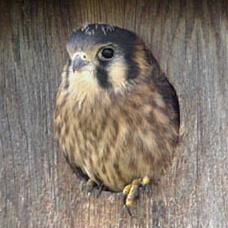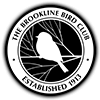American Kestrel Nesting Box Program

A young American Kestrel perched in a nest box on the Plum Island Turnpike in Newbury, MA.
The American Kestrel is our smallest and certainly our most colorful falcon. Found throughout North America, this valuable insect and rodent predator was formerly quite common. Numbers have declined significantly throughout the U.S. over the past decade, however. A shortage of nest sites is believed to be a major reason. The Kestrel is our only Hawk that nests primarily in tree cavities, such as old woodpecker holes. The felling of mature trees for firewood and construction has destroyed suitable sites in otherwise excellent habitat, producing a severe “housing” shortage.
The kestrel is a hawk of open country, preferring farmlands, meadows and abandoned fields. It has also adjusted well to urban and suburban life, nesting in mature trees along highways and feeding along right of ways and parkland. New England has ample habitat to maintain a sizeable kestrel population. What New England lacks is adequate nest sites. Fortunately, the kestrel will nest in artificial “holes” – nest boxes.
If you are interested in building kestrel boxes, or know of any organization that might be, please contact:
Paul M. Roberts
254 Arlington Street
Medford, MA 02155
e-mail
Paul can provide complete construction directions as well as information on funding. Additional information on American Kestrels and nesting box programs is also available. If you don’t have the time to build boxes but know of good locations for nesting boxes, please send Paul an e-mail. Some volunteers plan to build additional boxes for distribution, so the club may be able to provide you with a ready-made box to place.
Thank you for your help, and look for the spring migration, which occurs between mid-March and late April.
